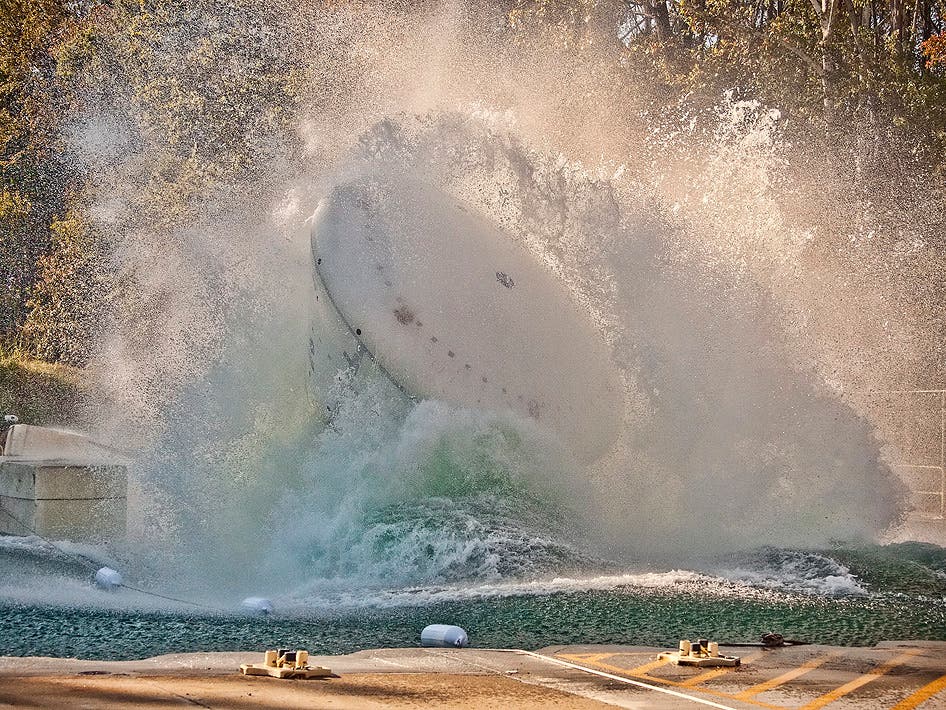
Orion Multi-Purpose Crew Vehicle at the water landing test at NASA Langley's Hydro Impact Basin. Credit: NASA/Sean Smith
Yesterday NASA tested a 18,000 pound mock-up of the ambitious Orion spacecraft in a water basin, to simulate how it would handle a Pacific Ocean landing in moderate sea conditions. The spacecraft is slated for space exploration programs and is capable of carrying four astronauts for as much as 21 days.
The scientist at NASA’s Langley Research Center used a basin, resembling a very large pool (15 feet long and 90 feet wide), in which they dropped the capsule at a speed of 22 mph. A mega splash soon followed, before it eventually hit the net without rolling – the most important thing the engineers were hoping for. This is just one test in a long series of trials meant to ensure the Orion capsule doesn’t fall apart on impact.
“We want to make sure the spacecraft stays intact when it does hit, and of course at the same time, you want to keep the astronauts safe,” said Bowman, who is NASA Langley Research Center’s Orion SPLASH project manager.
While Orion still doesn’t have a clear purpose, the spacecraft can be easily deployed into low orbit to service the International Space Station, however it’s been design to suit more ambitious goals like landing on an asteroid. The Orion project is actually the space legacy left behind by former president George W. Bush, who wanted to put astronauts back on the moon. NASA gave Lockheed Martin of Bethesda, Md., a $7.5 billion contract in 2006 to build it.
The NASA engineers were not satisfied just to see the capsule bomb shell a pool. Instead, they looked for measuring absolutely every parameter that might be involved in the impact with the Pacific Ocean, like speed, angle of approach and the capsule’s angle, while also performing a safety test to see how Orion behaves with just two out of the three parachutes working. While this particular mock-up tested in Hampton, Virginia lacked the seats and internal instruments present in the real model, future tests will include more accurate details.
Lockheed Martin officials claim that the Orion spacecraft is extremely advanced, capable of complex space exploration missions, however there’s no chance it could be used for something like a Mars mission.
“The ultimate destination is still getting to Mars, but we’re a ways off from that,” said Dave Bowles, director of exploration and space operations at Langley. “There are some very technical challenges going on that duration type of a mission.”









